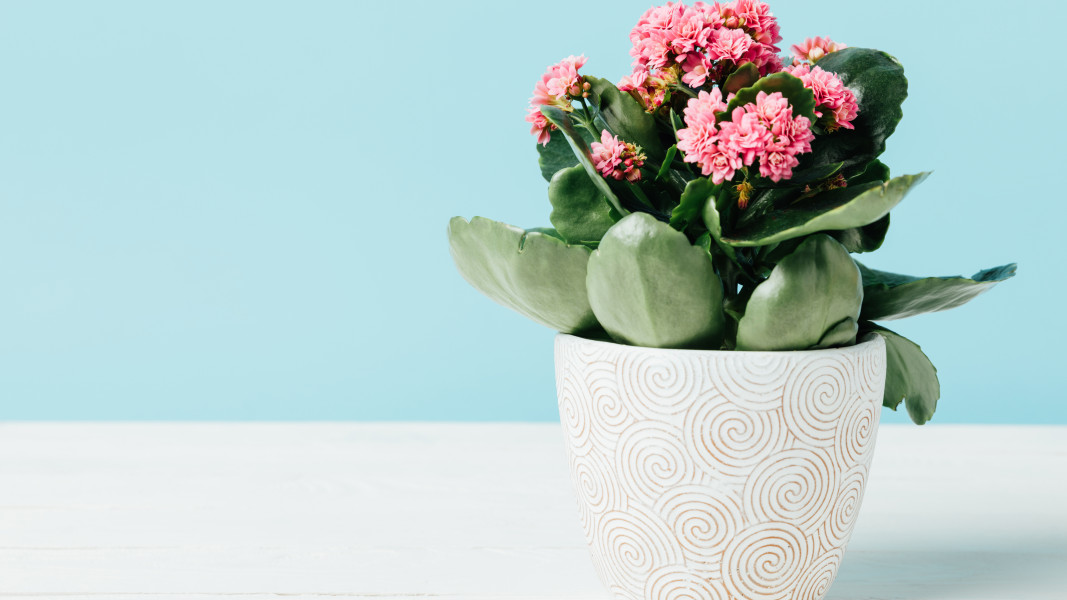Taking Care of the Kalanchoe Plant
Kalanchoe does not tolerate high temperatures - it develops best at a temperature of around 55 F. In order not to lose its decorative value and for the plant to bloom abundantly next year, after flowering, all flower-bearing stems are removed. The plant is watered throughout the summer moderately, without overwatering. At the beginning of winter, all the branches turn into flower-bearing stems.
Anyone can propagate Kalanchoe themselves by cuttings from lateral branches in the spring. They root easily in a soil mixture of peat and sand in a ratio of 1:2. Rooting of cuttings can also be done in water, after which the plants are planted.
While they are still young they are retired (the tips of the individual branches are removed). This operation is done once or twice to obtain well-branched, low and profusely flowering plants.
Kalanchoe is a short-day plant, so it blooms in winter. To induce earlier flowering, you can artificially reduce the light during the day by darkening.
Mistakes You Must Avoid While Taking Care of a Kalanchoe
Do not overwater during the winter months
Like most decorative plants, Kalanchoe does not need much water in winter. It is also a type of succulent and contains water in its tissues that it can use when needed.
If you notice rotting of the leaves in their lower part towards the stems, remove them and reduce the watering even more.
Lack of light is a major winter problem for kalanchoe
The insufficient amount of light leads to falling leaves, changing their color and thinning the stems. The plant gradually loses its decorative qualities. For this purpose, keep the kalanchoe in a well-lit place - near a window or provide sufficient artificial lighting.
Why does kalanchoe grow and not bloom?
The reason for this is insufficient lighting and incorrect temperature regime. Flower buds are laid in autumn at a temperature of 16-18 degrees. If it is lower or higher, the process stops and the kalanchoe grows, but does not form a flower.
Yellowing and falling leaves
The most common reason is incorrect water regime. In the absence of moisture, the leaves turn yellow, dry and eventually fall off. If you overdo it with water, the stem can rot and eventually, the foliage will fall again. Kalanchoe requires moderate, balanced watering.
Plant Diseases You Should Be Aware Of
Phytophthora
Brown spots appear on the leaves of the plant, which over time begin to turn black. Subsequently, all plant tissues die. Causes of emergence are excessive watering, retention of moisture in the soil or unsuitable substrate. Damaged parts should be removed with a sharp knife until firm, and the cutting point should be treated with activated carbon. If a large part of the plant is affected, use appropriate fungicides after consulting a specialist. Then move the plant into a new soil substrate.
Powdery mildew
It likes warm and humid rooms. A white plaque appears on the leaves of the affected plant. They will eventually dry out, shrivel and fall off. Over time, the entire plant will deform, stop growing and flowering. It is necessary to spray with fungicides 3-4 times in a period of 10 days. Then try to ensure good air circulation and optimal humidity. Do not keep the plant in very warm (above 70 degrees F) rooms in winter.
Gray rot
It is caused by a fungus. Especially vulnerable are recently transplanted plants, those that live in too warm and humid conditions, as well as those planted in poor soil. It leads to the appearance of gray spots on the leaves, drying and deformation of the stem. It needs specific medication for the plant and you should find a suitable one.

